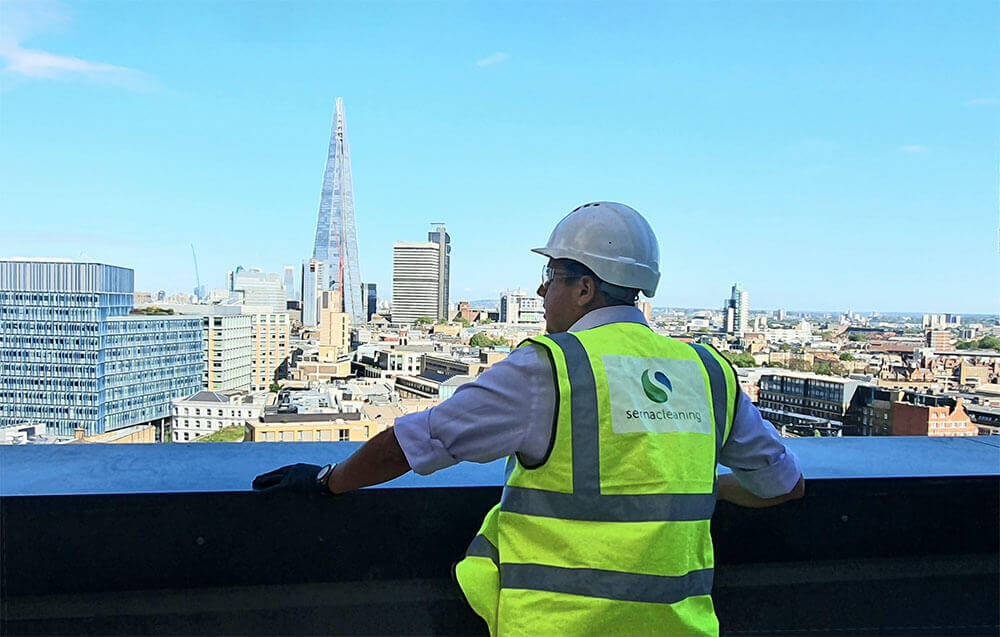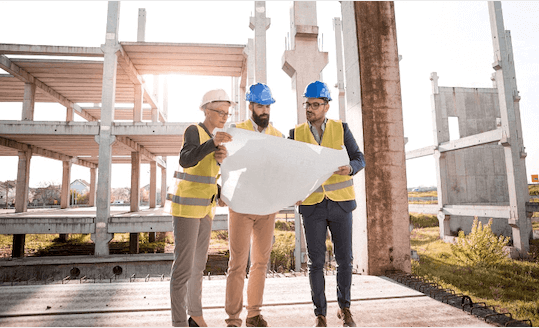Renovating or building a property can bring exciting changes, but it often leaves behind a frustrating by-product: builders’ dust and debris. After all the hard work and construction, the fine layers of dust and residue seem to coat every surface, and getting rid of it can be a daunting task.
Whether you have just completed a small refurbishment or a major building project, knowing the correct methods to clean up efficiently will save you time and effort, while ensuring the space is safe and healthy for use. With this in mind, Serna FM presents a comprehensive guide on how to effectively clean after builders.
What Is Builders’ Dust?
Builders’ dust typically consists of a combination of materials such as plaster, wood, concrete and sometimes hazardous particles like silica and asbestos. This dust can be incredibly fine, making it easy to spread throughout the property and difficult to remove.
According to industry reports, a typical renovation can produce up to 23 kilograms of dust, much of which may settle on surfaces and in hidden corners over time. Failing to clean it effectively can have long-term consequences, as the dust can lead to respiratory issues and allergic reactions if left untreated.
Top Tips On How To Clean After Builders
Step 1: Dry Dust Removal
The first step in builders cleans is to tackle the dry dust that has settled on surfaces. Begin with a microfibre cloth, as this material traps dust more effectively than standard cloths or dusters, which often just push the particles around.
Wipe down all visible surfaces, including windowsills, furniture, countertops, and walls. Dry dust removal is particularly important because fine particles can settle into cracks and crevices, making later cleaning more difficult if this layer is not addressed.
Special attention should be paid to higher surfaces such as shelves or the tops of cupboards, as builders’ dust tends to rise and settle. Using a vacuum with a HEPA filter at this stage can also help to remove dust from hard-to-reach places like baseboards, corners, and under furniture, preventing it from being re-released into the air.

Step 2: Vacuuming Thoroughly
Vacuuming is a critical step in post-construction cleaning, especially when dealing with larger debris and fine dust that has settled into carpets or flooring. Use a vacuum cleaner equipped with a HEPA filter to capture fine particles.
HEPA filters are specifically designed to trap tiny dust particles that standard vacuum cleaners may miss. According to a recent study, HEPA vacuums can capture up to 99.97% of particles as small as 0.3 microns, making them highly effective for post-renovation cleaning.
Pay particular attention to carpets and soft furnishings, as these materials tend to trap dust deep within their fibres. For hard floors, use the appropriate vacuum attachment to reach corners and edges where dust can collect. If you are in a property with exposed pipes, especially in kitchens and bathrooms, vacuum carefully around plumbing fixtures to ensure that no dust accumulates in areas that could affect the plumbing systems.
Step 3: Wet Cleaning and Mopping
After removing the initial layer of dry dust, wet cleaning is necessary to capture the remaining particles and ensure surfaces are left clean and free from residue. Start by wiping down all surfaces, including windows, countertops, and floors, with a damp cloth and mild detergent. Avoid using too much water, especially on wooden surfaces, as this can cause warping or damage.
For hard flooring, a damp mop should be used to remove any remaining dust. Post-construction dust can be stubborn, and multiple rounds of mopping may be needed to fully eliminate it.
Research shows that dust can linger in the air for up to 3 months after construction, so regular mopping is necessary to prevent further accumulation. Be sure to rinse out your mop regularly to avoid spreading dust back across the floor.
Step 4: Air Purification
One of the most overlooked aspects of cleaning after building work is ensuring the air quality is restored. Builders’ dust often remains airborne for long periods, meaning that even after surfaces are cleaned, the air may still carry harmful particles. Using an air purifier with a HEPA filter can help capture these airborne particles and improve the overall air quality.
This step is particularly important for homes or offices with occupants who have allergies, asthma, or other respiratory conditions. According to a British Lung Foundation survey, more than 12 million people in the UK are affected by lung conditions, with dust and pollution being key triggers. Investing in air purifiers post-construction can significantly reduce health risks and improve the air quality of the space.
Step 5: Clean Ventilation and Ducts
Lastly, attention must be given to the property’s ventilation systems, which can easily trap builders’ dust and recirculate it through the air. Clean out any air vents, extractor fans, and ductwork to remove any lingering dust that may have settled during construction.
This step ensures that clean air can flow through the property without being contaminated by residual dust particles. In properties across London, where older buildings may already have outdated ventilation systems, this step is crucial to maintaining a healthy indoor environment.
What Are Some Preventative Measures For Future Projects?
If you are planning further building work in the future, consider implementing preventative measures to reduce the amount of dust produced during construction.
Installing temporary dust barriers and using dust extraction equipment can help to contain the spread of particles and make the post-construction cleaning process much easier. Builders’ dust can be incredibly pervasive, so minimising it during the build can significantly reduce the amount of cleaning required afterward.

The Bottom Line
Cleaning up after builders requires a methodical approach to ensure all traces of dust and debris are removed from the property. With the right tools and techniques—dry dusting, vacuuming, wet cleaning, air purification, and ventilation cleaning—your space will be restored to its former glory, free from harmful dust particles. Whether it is a small refurbishment or a large-scale renovation, following these steps will ensure a clean, safe, and healthy environment for everyone.

